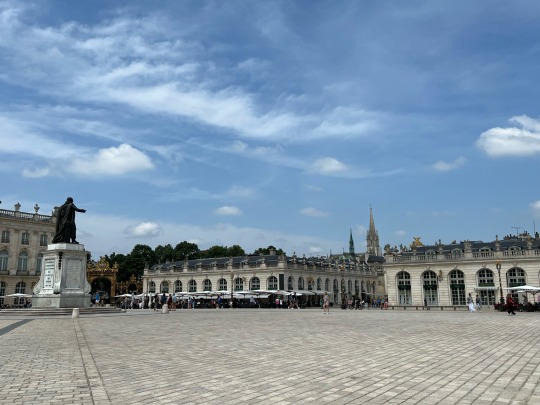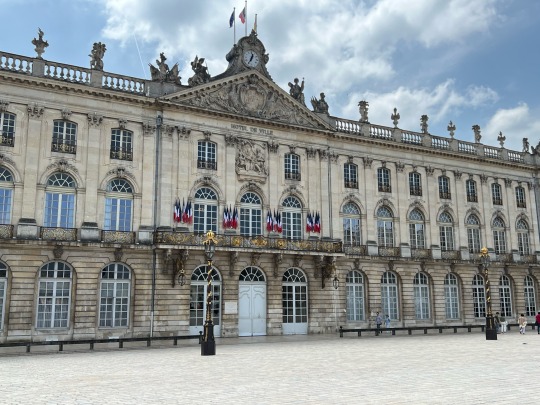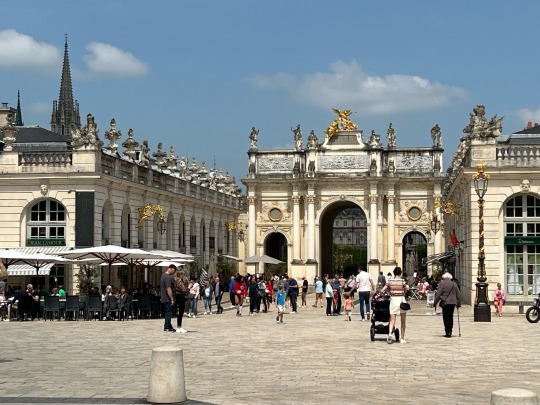#place stanislas
Text

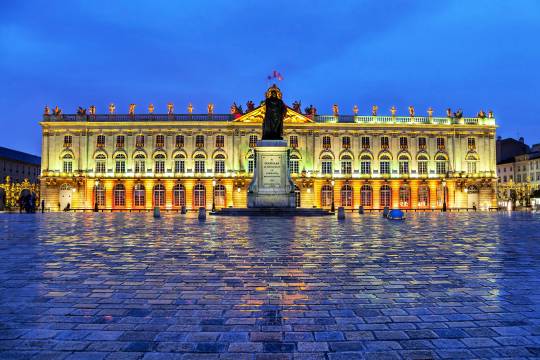
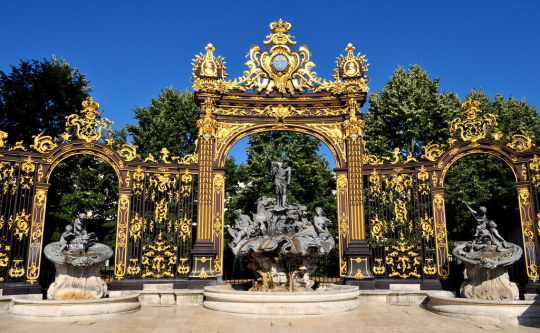
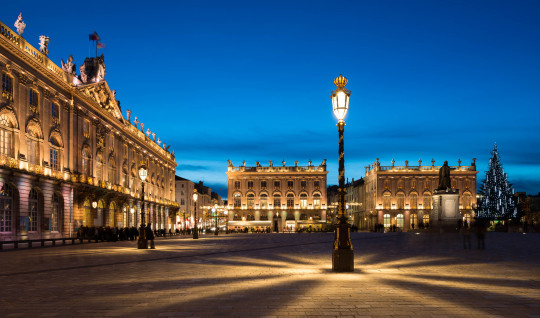

PLACE STANISLAS - NANCY, FRANCE
#place stanislas#stanislas#stanislas plaza#plaza stanislas#the fountain of neptune#la fontaine de neptune#la fuente de neptuno#nancy france#nancy#france#francia#europe#europa
30 notes
·
View notes
Text
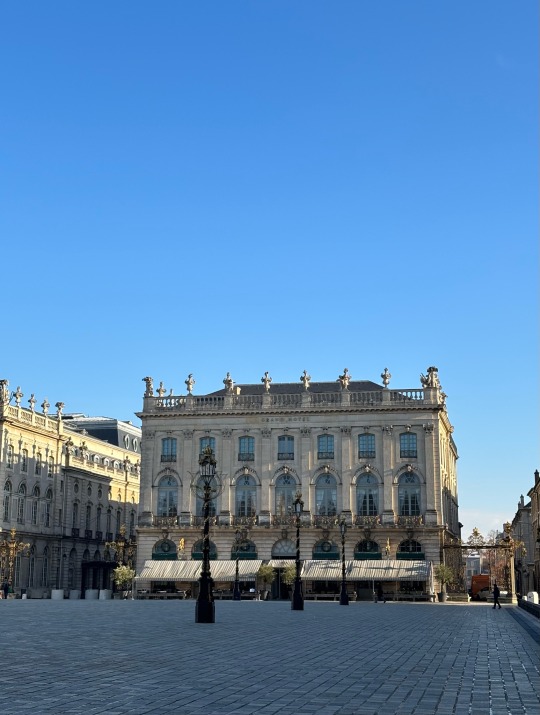

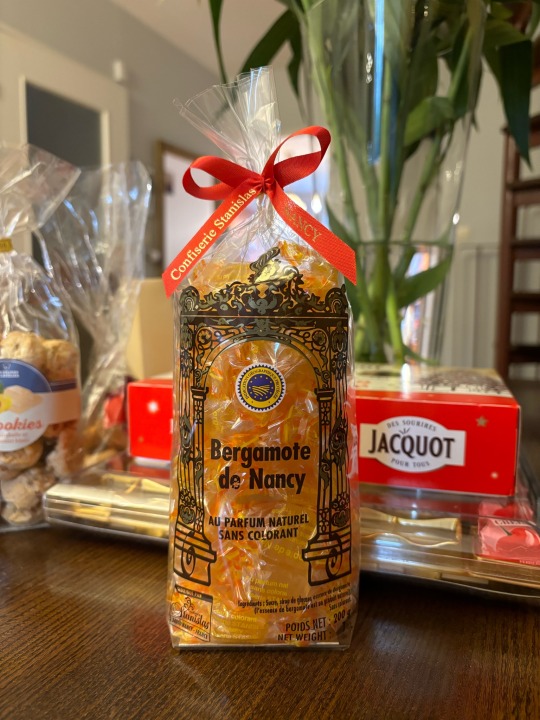
Yesterday, I felt like a real fan of my hometown.
I found the Stan square so beautiful that I took a photo of it, found myself in a souvenir store and bought a packet of bergamots for my grandmother.
#galette des rois#fèves#bergamotes#sweets#most beautiful places in France#stanislas#place stanislas#place stan#gingerbread man#saint nicholas#epiphany#kings
4 notes
·
View notes
Photo

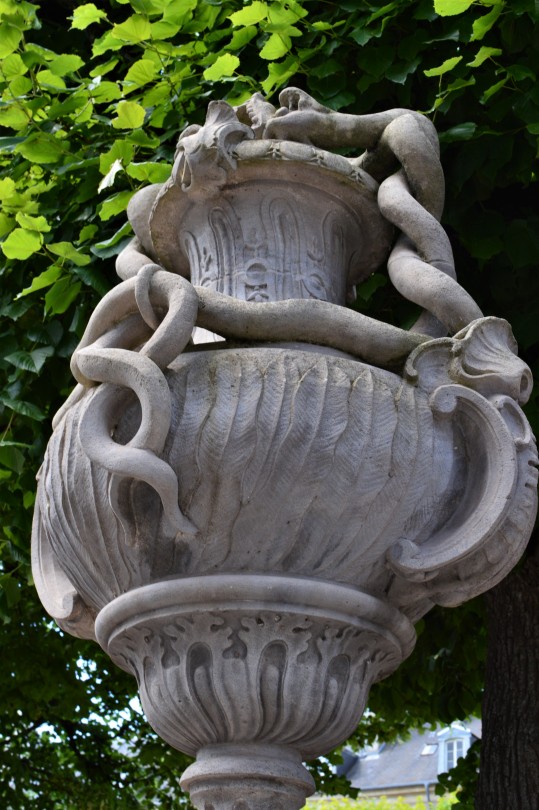
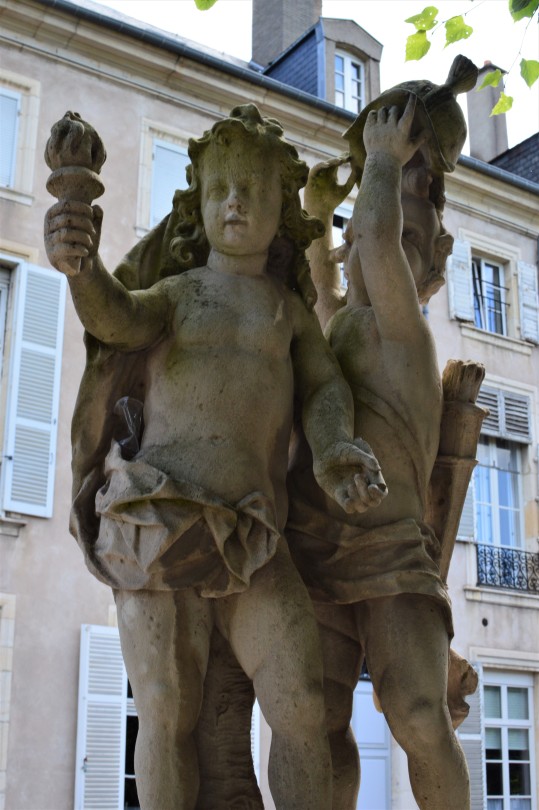

Place Stanislas
Nancy
France
photos cjmn
50 notes
·
View notes
Text
Monumental

2 notes
·
View notes
Photo
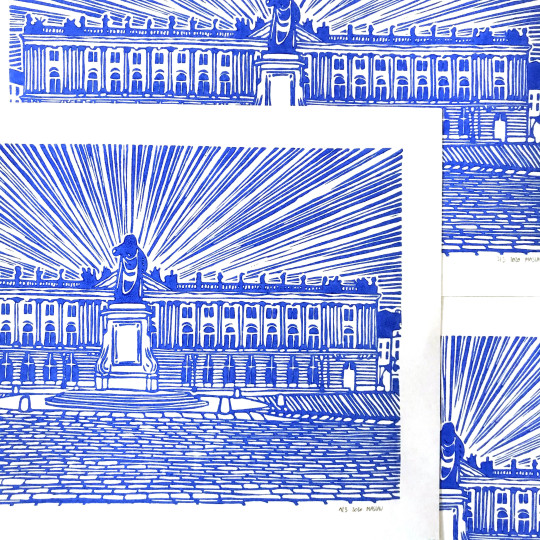
Place Stanislas,
Handprinted Blue Monochrome Linocut by Maslau
Edition of 3, 2020
Architectures nancéiennes series
shop
#place stanislas#nancy#nancy france#architecture#blue#printmaking#artiste#linogravure#linocut#linoprint#prints#place stan#artiste nancy#maslau
2 notes
·
View notes
Text

Notre emblème à la fraise et à l'engrenage va fêter ses 15 ans d'existence en 2024.
Mine de rien, on en aura fait bouger des foules à Nancy et aux alentours,
Pour ce nouveau cap, nous vous souhaitons le meilleur pour cette nouvelle année, joie, santé, et surtout ayez confiance en vos projets, même les plus fous.
1 . 2 . 3 , on tourne chez Tourneur ;-)
#nancy#concert#gala#sonorisation#fraise#place stanislas#stanislas#meurtheetmoselle#toul#epinal#luneville#engrenage#tourneur#zenith
0 notes
Text
France : prenez le train pour visiter des lieux incroyables
Cet été, découvrez les charmes de la France à travers des escapades en train. Partez pour Nancy, la perle de l'UNESCO, pour admirer son architecture baroque et la célèbre place Stanislas. Ne manquez pas la rue des Écuries, qui relie les habitations au parc de la Pépinière.
Crédit photo : DietArt de Pixabay
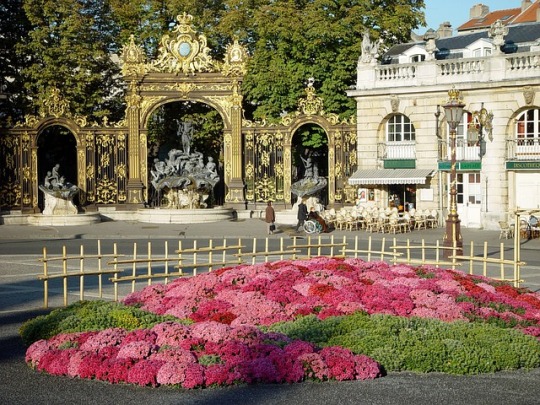
0 notes
Text


Cathedral Square & Cathedral Basilica of St Stanislaus and St Ladislaus of Vilnius, Lithuania
Katedros aikštė & Vilniaus šv. Stanislovo ir šv. Vladislovo arkikatedra bazilika, Vilnius, Lietuva
Plac Katedralny w Wilnie & Bazylika archikatedralna św. Stanisława Biskupa i św. Władysława, Wilna, Litwa
Kathedralenplatz Vilnius & Kathedrale St. Stanislaus und St. Ladislaus, Vilnius, Litauen
Place de la Cathédrale et Basilique archicathédrale Saint-Stanislas et Saint-Ladislas de Vilnius, Lituanie
Кафедральная площадь & Архикафедральный собор базилика Святого Станислава и Святого Владислава, Вильнюс, Литва
#Cathedral Square#Cathedral Basilica of St Stanislaus and St Ladislaus#Vilnius#Lithuania#Katedros aikštė#Vilniaus šv. Stanislovo ir šv. Vladislovo arkikatedra bazilika#Lietuva#Plac Katedralny#Wilna#Bazylika archikatedralna św. Stanisława Biskupa i św. Władysława#Litwa#Kathedralenplatz#Kathedrale St. Stanislaus und St. Ladislaus#Litauen#Place de la Cathédrale#Basilique archicathédrale Saint-Stanislas et Saint-Ladislas#Lituanie#Кафедральная площадь#Архикафедральный собор базилика Святого Станислава и Святого Владислава#Вильнюс#Литва#at night#bei Nacht#dans la nuit#ночью
1 note
·
View note
Link
Grand Hotel De La Reine - Place Stanislas Located in the heart of Nancy, on the beautiful Place Stanislas, the Grand Hotel de la Reine is set in an 18th-century building and offers uniquely decorated accommodation and free WiFi throughout. All of the rooms are air conditioned and equipped with cable TV. Some of them also have a minibar. Each private bathroom features a bathtub. The hotel’s restaurant, Restaurant Le Louis proposes dishes prepared by the chef with fresh, local produce. Guests can either have their meals in the bright dining room, or on the terrace set on the Place Stanislas. The Grand Hotel De La Reine - Place Stanislas Place Stanislas also has a charming reading room and an elegant bar. The hotel is 1km from the Palais des Congrès Convention Centre and the staff will be happy to help you organise your stay in Nancy 24 hours a day. The hotel has royal rooms and royal apartments which offer a breathtaking view of Place Stanislas.
0 notes
Note
Is there a list of frev figures who claimed to be at the storming of the Bastille? The people I know who said they at least witnessed it is pretty eclectic like Herault, Léon and Saint-Just.
I found all the (official?) ”vainqueurs de la Bastille” listed in alfabethical order here (1889). However, according to Michael J. Sydenham’s Léonard Bourdon: The Career of a Revolutionary, 1754-1807, who’s subject of study claimed to belong to this group, simply holding this title was not a guarantee that you had actually taken part in the storming itself:

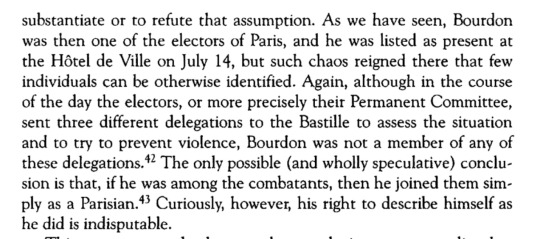
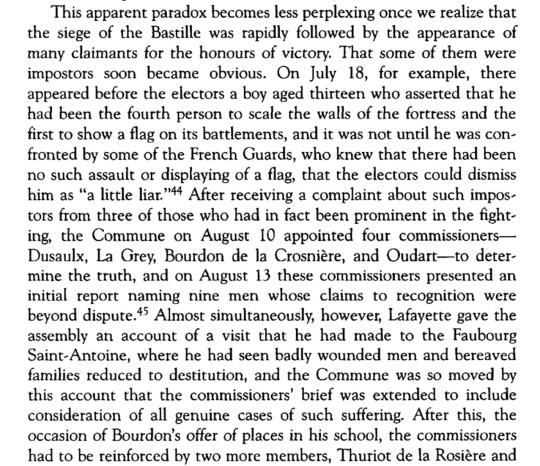


The only people found on the list that I myself recognized were those of the dantonist Louis Legendre, the girondin Claude Fauchet and the general Antoine Joseph Santerre. I therefore don’t know if the people claiming to have participated in the storming here below are just lying (saying you played a role in it after all being something that would easily better your patriotic reputation) or if their participation just wasn’t recorded (which doesn’t sound particulary hard to be true either):
Stanislas Fréron claims in a letter to Lucile Desmoulins dated October 18 1793, that both he, Barras and La Poype ”besieged” the Bastille.
Pierre Nicolas Berryer wrote in his memoirs that the Convention deputy Bourdon d’Oise participated in the storming of the Bastille, and still kept the blood stained coat he had worn during it five years later:
At the same time, and as if he felt the need to convince me even more of the strength of his mind, [Bourdon] took out from under his bed an oblong casket, in which was tucked the coat he had worn on the day of the storming of the Bastille… […] He took great care to point out to me that his coat was still covered with stains from the blood he had spilled at the Bastille.
Albert Mathiez summarized in the article La vie de Héron racontée par lui-même (1925) a memoir the Committee of General Security spy François Héron wrote while imprisoned after thermidor. In it, he would have claimed to have participated in the storming of the Bastille, as well as the women’s march on Versailles, the demonstration of June 20 and the Insurrection of August 10.
According to Dictionnaire des parlementaires français (…) de 1789 à 1889, Jacques-Alexis Thuriot took part in the storming.
Regarding some more well known guys and their Bastille activities, Desmoulins, in a letter written to his father written July 16, leaves a rather detailed description of the storming. Through the following part, he does however indicate that he himself missed it:
Then, the cannon of the French Guards made a breach. Bourgeois, soldiers, everyone rushes forward. An engraver climbs up first, they throw him down and break his legs. A luckier French guard followed him, seized a gunner, defended himself, and the place was stormed in half an hour. I started running at the first cannon shot, but the Bastille was already taken, in two and a half hours, a miracle that is.
Camille also adds that, on July 15, he was among the people who scaled the ruins of the stormed Bastille:
However, I felt even more joy the day before, when I climbed into the breach (montai sur la brèche) of the surrendered Bastille, and the flag of the Guards and the bourgeois militias was raised there. The most zealous patriots were there. We embraced each other, we kissed the hands of the French guards, crying with joy and intoxication.
On July 23 1789, Robespierre wrote a letter to Antoine Buissart telling him he had gotten to see the ”liberated” Bastille, but he had of course not participated in the storming himself:
I’ve seen the Bastille, I was taken there by a detachment of the brave bourgeois militia that had taken it; because after leaving town hall, on the day of the king's trip, the armed citizens took pleasure in escorting out of honor the deputies they met, and they could only march among acclamations from the people. What a delightful abode the Bastille has been since it came into the power of the people, its dungeons are empty and a multitude of workers work tirelessly to demolish this odious monument to tyranny! I could not tear myself away from this place, the sight of which only gives sensations of pleasure and ideas of liberty to all good citizens.
According to Danton: le mythe et l’histoire (2016), Danton did not take part in the actual storming of the Bastille, however, the following day he went to the abandoned prison and took the provisional governor hostage:
Absent from the storming of the Bastille, it was on the night of July 15 to 16 that Danton took action. At the head of a patrol of the bourgeois guard of his district, of which he proclaimed himself captain, he claimed, we do not know in what capacity, to enter the "castle of the Bastille,” placed under the control of the elector Soulès, as provisional governor. Without worrying about his powers, Danton has him kidnapped and taken to City Hall, surrounded by a threatening crowd. But Soulès was released the next day upon the intervention of La Fayette; Danton's initiative was openly disavowed and blamed by the assembly of electors.
According to Clifford D. Connor, Marat wrote the following about his activities on July 14 1789 in number 36 of l’Ami du peuple (12 November 1789):

#lots of thermidorians who were involved in the storming…#french revolution#frev#bastille#danton was really unhinged here…
25 notes
·
View notes
Note
Ditching phonics makes no sense! I learnt to read full novels in 4 months and read Lord of the Rings when others were struggling with early learner books. Why do schools allow ideologues render so many children illiterate?
It's really wierd. "Whole word"/"whole language"/"three-cueing" functions as a kind of ideology and worldview. It's not based on anything demonstrably true about how people learn to read, and adherents cling to it with resolute faith.
It seems to comprise part of a larger philosophy that teachers actually teaching, and students actually learning, useful skills like the alphabet, how to read, how to add and multiply, is oppressive, limiting and "rote learning." And we should instead open up the world to kids to just let them absorb all this stuff and figure it out for themselves. Just show them how fulfilling, how great reading is, and they'll pick it up on their own. It feels nice to these people. Which, of course, is the most important thing. Not working with kids through the hard process of building a life skill that could make or break their future.
Two thirds of American Ed School professors teach the homeopathy of "Whole Word," aka "Three-Cueing" to their classes of future teachers. And I say "homeopathy" deliberately, in that "whole word" crusaders believe kids magically absorb reading in the same way homeopaths believe water magically absorbs the properties of other chemicals.
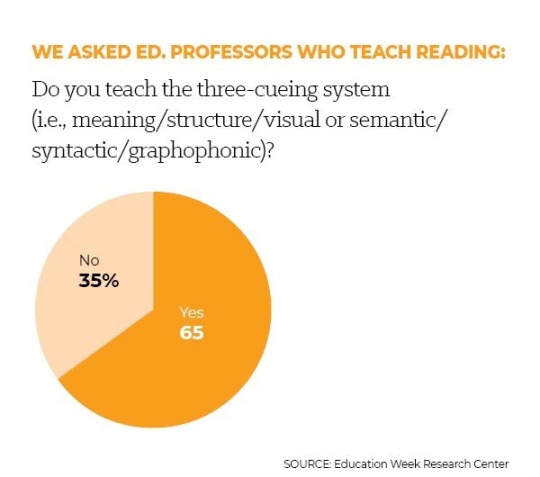
This is like two thirds of geography teachers teaching that the Earth is flat, or two thirds of chemistry teachers teaching about how you should stay away from "chemicals."
https://en.wikipedia.org/wiki/Reading#Whole_language
In his 2009 book, Reading in the Brain, cognitive neuroscientist, Stanislas Dehaene, said "cognitive psychology directly refutes any notion of teaching via a 'global' or 'whole language' method". He goes on to talk about "the myth of whole-word reading", saying it has been refuted by recent experiments. "We do not recognize a printed word through a holistic grasping of its contours, because our brain breaks it down into letters and graphemes". In addition, cognitive neuroscientist Mark Seidenberg, in his 2017 book Language at the Speed of Sight, refers to whole language as a "theoretical zombie" because it persists in spite of a lack of supporting evidence.
This is from the US government's Nation's Report Card website.

[ Note: This is part of a larger infographic; I trimmed it down to include just reading and writing. You can see the whole thing at the original website. ]
It's minority and underprivileged kids who suffer from this reading woo because they may not have as many books at home, may not have as stable a home life, might not have family members who can take the time to spend on the alphabet or reading practice if, for example, it's a single-parent household with a parent holding down two jobs to make ends meet. Or didn't learn to read properly themselves. These are kinds of considerations that grifters like Kendi and DiAngelo never factor into their sweeping narratives of systemic this and that. And cast you as a bigot for even suggesting.
How about, before implementing the toxic poison of the tenets of Critical Race Theory, you actually teach the kids to read? How about before implementing divisive oppressor-vs-oppressed programs of unsubstantiated postmodern philosophy in Kindergarten, you teach the alphabet and then see what sort of life success your students get.
As Roland Fryer remarked:
"I've been in fifth grade classrooms in which they're still learning the clock, and how to tell time, in fifth grade. I told the principal, if they can't tell time, at this point, they'll have no place to be on time for."
What's further difficult to stomach is that this has been known for over 60 years.
https://en.wikipedia.org/wiki/Why_Johnny_Can%27t_Read
Why Johnny Can't Read—And What You Can Do About It is a 1955 book-length exposé on American reading education by Rudolf Flesch. It was an immediate bestseller for 37 weeks and became an educational cause célèbre.
In this book, the author concluded that the whole-word (look-say) method was ineffective because it lacked phonics training. In addition, Flesch was critical of the simple stories and limited text and vocabulary in the Dick and Jane style readers that taught students to read through word memorization. Flesch also believed that the look-say method did not properly prepare students to read more complex materials in the upper grade levels.
Just think about that. For over sixty years, many kids have been taught to read using known substandard, ineffective methods, and any success they had was in spite of that teaching, not because of it.
Think of how many kids dropped out of school or did poorly because they were frustrated by not being able to fully participate, or concluded that school wasn't for them because they couldn't "get it." Who watched more advantaged kids streak ahead of them, thinking that there was something wrong with them. And if you can't read, how well can you possibly write?
Think of how many underprivileged kids perpetuated a cycle of dropping out of school, possibly early or single parenthood, low income prospects or even crime, and eventually unable to help their own kids learn to read properly, because the school will not. On the basis of an unevidenced ideology that asserts that "learning to read English comes naturally to humans, especially young children, in the same way that learning to speak develops naturally."
https://en.wikipedia.org/wiki/Whole_language#State_of_the_debate
One neuroscientist, Mark Seidenberg, says "[Whole-language quack Ken] Goodman's guessing game theory was grievously wrong" and "the impact was enormous and continues to be felt". When it come to evidence supporting the whole-language theory, he emphatically states "There wasn't any".
Dr. Lyell Asher goes into this in a segment of his larger series. Part 12 is specifically about "The Reading Debacle," but Part 11, "The Knowledge Gap," gives some important background that explains the criticality of literacy.
youtube
youtube
Other people like Emily Hanford and Belinda Luscombe have been writing about this as well.
It's amazing that something so fundamental could become yet another ideological warzone, with kids caught in the crossfire.
#ask#science of reading#phonics#reading#literacy#basic literacy#sound it out#whole word method#whole language method#corruption of education#education#pseudoscience
65 notes
·
View notes
Photo
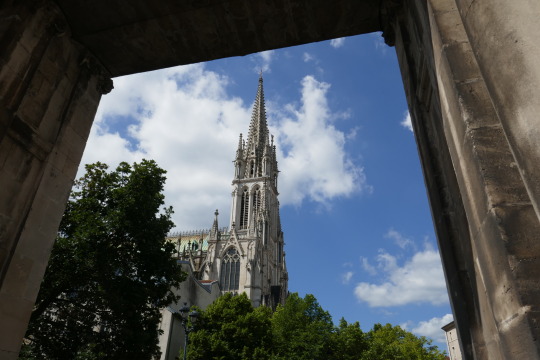
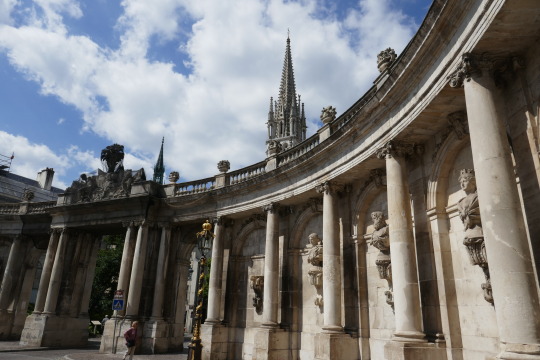
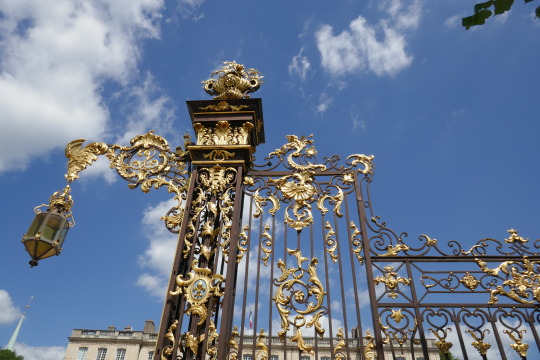
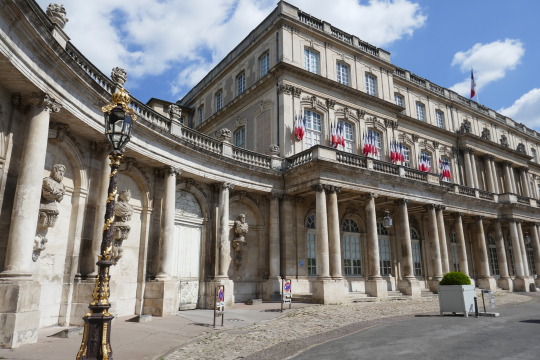
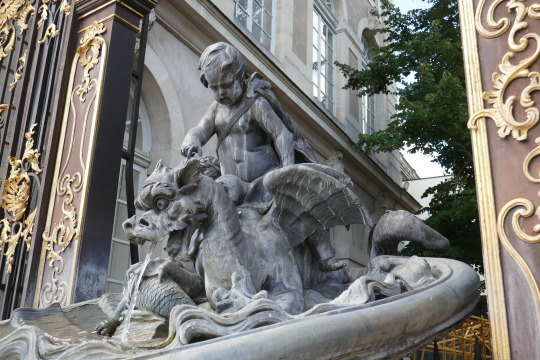
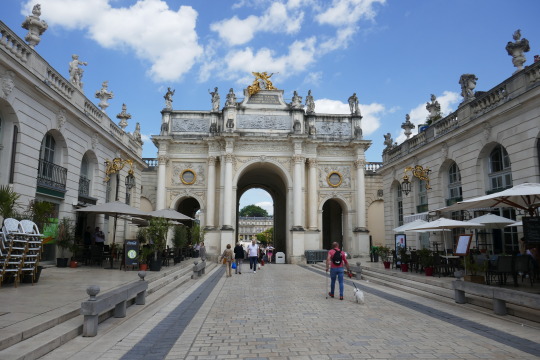

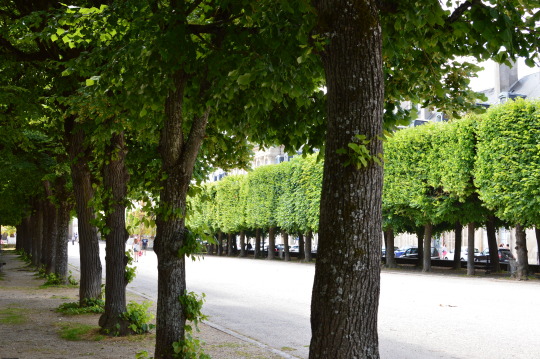
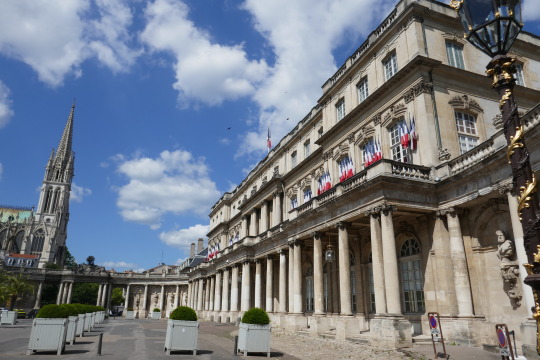
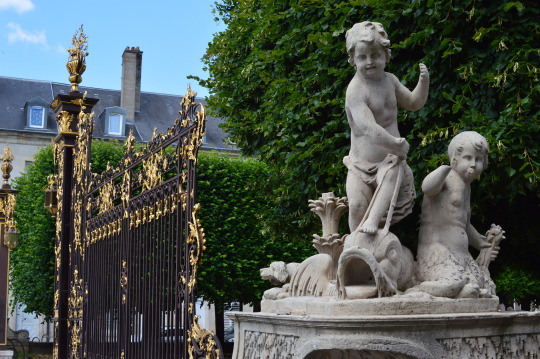
Place Stanislas e arredores
Nancy
França
fotos cjmn
28 notes
·
View notes
Text
[In early May 1967, w]hile the Redlands trio [Mick Jagger, Keith Richards, and Robert Fraser] awaited trial, DS [Norman] Pilcher raided Brian Jones’s London flat, busting him and his friend Prince Stanislas Klossowski de Rola, the extravagantly named son of the French painter Balthus. Brian and Prince Stash, as he was known for short, were taken down to Kensington Police Station in a blaze of publicity and charged with possession of cocaine and cannabis, Jones charged additionally with possession of cocaine and methedrine. They went from the police station to the new high-rise Hilton Hotel on Park Lane, where the Stones’ new American manager Allen Klein was staying, but the hotel management made it clear that Jones and de Rola were not welcome, which is when Prince Stash took a call from Paul McCartney, whom he knew slightly.
Prince Stash explained to Paul that he and Brian couldn’t stay at the Hilton, and couldn’t go back to Brian’s flat because of the press. Brian had other places he could go, but Stash, a foreigner, didn’t know what to do. ‘I’m sending my car and driver right now. You’re packing your bags and moving into my house, and if they want to bust you again they’ll have to bust me as well,’ Paul said. So Prince Stash joined Paul and Dudley at Cavendish Avenue, running movies on Paul’s 16mm projector, taking drugs and entertaining what Stash describes as harems of girls, including a [woman] named Iggy [Evelyn Rose], while Beatles fans camped outside, periodically bursting in through the gates ‘like sort of cattle breaking through a fence’. They’d steal Paul’s laundry and empty his ashtrays—‘Did he smoke this?’—before being ejected.
[—from Fab: An Intimate Life of Paul McCartney, Howard Sounes]
#source notes indicate second paragraph is from author interview with de rola though it is hard to tell how precisely#anyway 'they'll have to bust me as well' god.#would make ABSOLUTE sense coming from a man who once had a cop offer to park his (VERY) improperly parked aston martin#and in light of the cops having probably waited for george to leave redlands before busting the stones#but it's SO insane really. pop royalty pop royalty#(also sounes wrote 'an eskimo woman named iggy' which 1) am unsure if term is offensive in general but also#2) is incorrect + racist in any case bc while she was known as 'iggy the eskimo' in the '60s she was apparently actually half-mizo#so did not want to leave this in rebloggable quote)#fab: an intimate life of paul mccartney#howard sounes#paul mccartney#brian jones#prince stash#1967
38 notes
·
View notes
Text

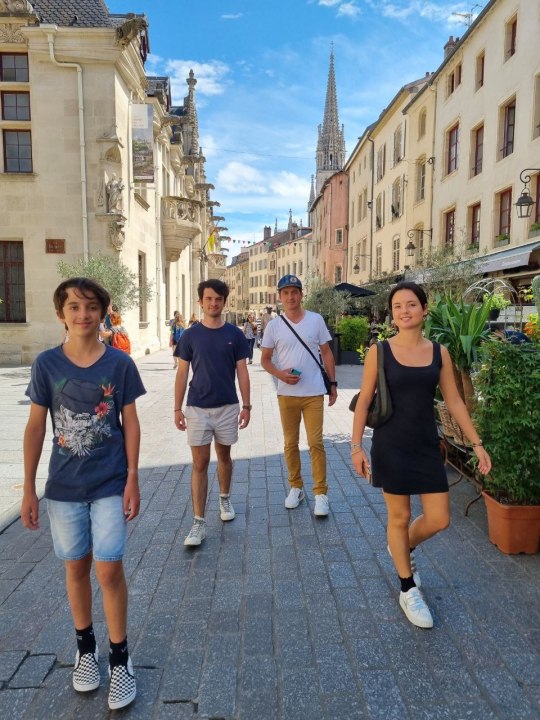


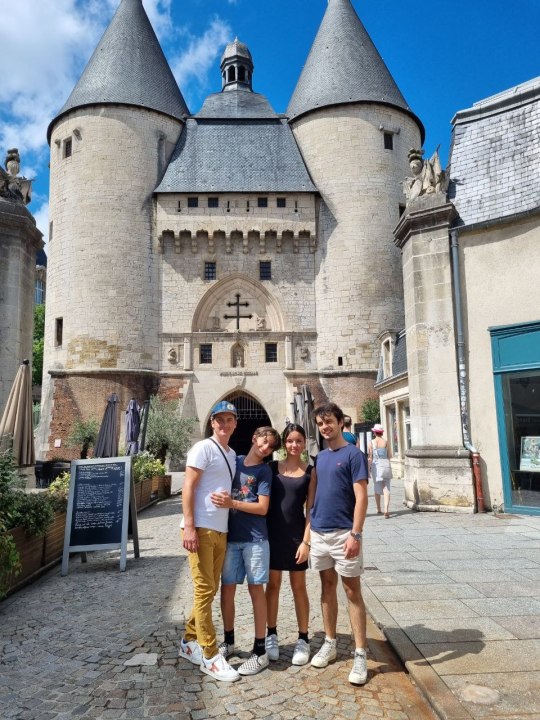

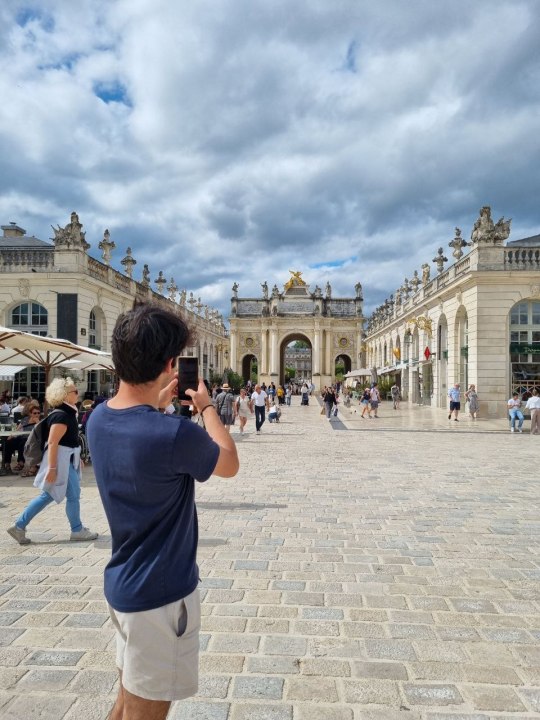

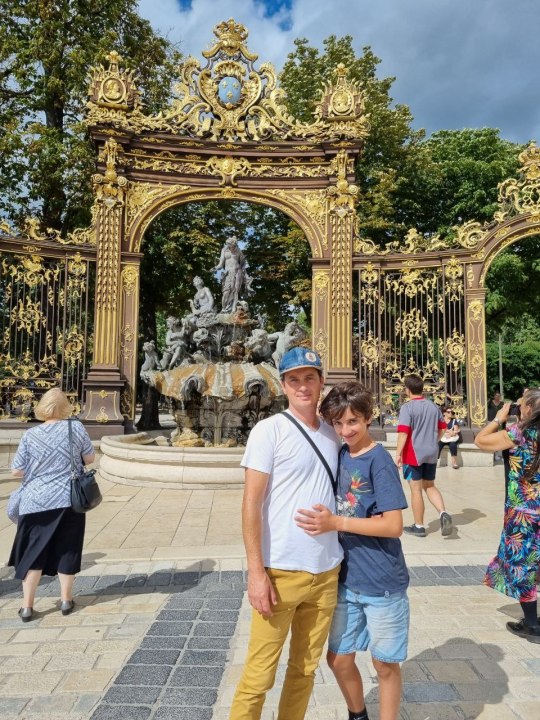
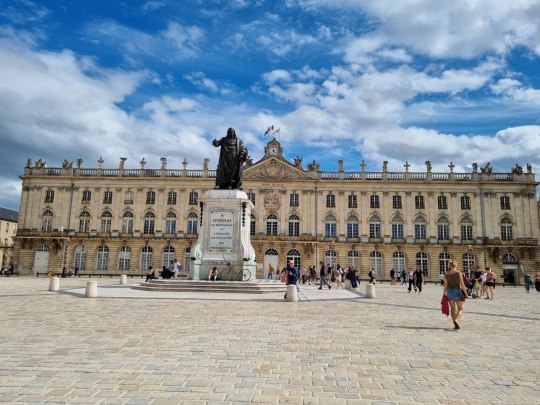
Visite de Nancy avec un beau soleil. La place Stanislas et le parcours historique étaient superbes.
3 notes
·
View notes
Text

Georges Dufrenoy (1870 - 1943)
"Nancy, la place Stanislas"
54 x 73 cm - Huile sur toile
Collection Musée des Beaux-Arts de Nancy, leg Mr Galilée
#dufrenoy#georgesdufrenoy#postimpressionism#oilpainting#nancy#placestanislas#art#artist#artoftheday#artwork#painting#art musuem#modernart
3 notes
·
View notes
